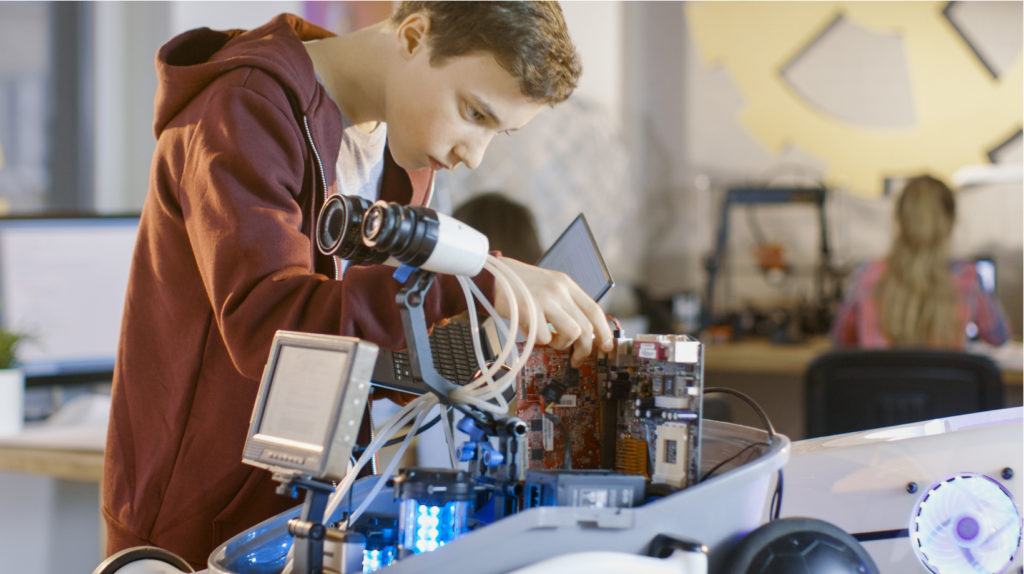Learning Progressions: Pathways For 21st Century Teaching Αnd Learning
The reality surrounding us and the discrepancy between what children are taught in schools and the real skills they need in nowadays society are having a big impact on everyone. It is not rare the occasion of hearing teenagers trying to get a job and not being able to, because of their skills not being correlated with that employers ask from them.
Learning Progressions – From Concept To Implementation
The underlying reason is that the learning process in schools is too rudimentary for the complexity that real life is asking in teenagers. Going deeper into the issue, we will discover that the topics most schools approach in this process have nothing to do with the package of skills required in today’s society. Having an analytical mind, being able to understand and communicate your message, as well as being able to deal with last-minute situations and to adapt to new environments are all new topics in the learning process. In order for them to be correctly integrated and accumulated by the subjects, the learning grounds need to be re-evaluated.
The question being asked is ‘’How to implement a new package of skills?’’, however, the real challenge is how to get to teach those skills so much needed. Since these are competencies developed in time, which vary very much depending on personalities, life experience, and family environment, the teacher needs to find a way to include these into individual paths.
The Complex Of Learning In The 21st Century
Not long ago, education stopped being about memorizing formulas or quotes. With the advance of technology and internet, information can be fetched at any time and the shift towards the ability to communicate, to analyze and predict the outcome of a situation or even multitasking have become key-competences.
However, just as it happens with our motorial competence, as we first learn how to sit when we are new-born, then how to crawl, and then get to actually stand and walk on our own, same path is required by learning progression as well. This requires a great dedication on the teacher’s side, as his main mission is to identify the right pattern of learning for each student. The exact way where not all children start walking at the same time, these learning progressions need to cater for all types and personalities, with the same expected outcome. What is even more important is to understand the necessity of not skipping any step, as the process will become an artificial one, with no real foundations.
Learning progressions will not necessarily impose a certain way of teaching, but provide you with a roadmap with different paths that the process can take a teacher to and methods on how to achieve the desired skills. The progress of the student will be thus monitored at each step of the process, by allowing him time to understand what could have been potentially improved. It also provides both the teacher and the student with a way of knowing when a skill was mastered. This is done through tests and competitions, which are built in order to show the potential of the student. However, it is also two-folded, as it prepares the student for actual situations where he will be able to apply the skills he has just acquired.
eLearning And What Happens After School
Problem-solving or adaptability are skills which will always be necessary and required, at any age. However, we shouldn’t stop learning if we weren’t or aren’t provided with such learning progressions. It is indeed true that learning progressions are meant to ease our way to a fruitful process, however, we can also find other ways to achieve it.
In a world where competition and the necessity to constantly prove ourselves, this can become overwhelming at times.
eLearning is probably one of the latest trends in regards to the learning process in the 21st century. The techniques which are used the most across various companies and business corporations are:
- Gamification, studying done through games and competitions
- Learning Management Systems, where students can interact with each one
- 3D environment, Apple watches, and other promoters of learning in alternative ways
- Cloud-based learning systems, used by very big companies
All in all, the fast pace of technology has left behind a few areas which still need to pace up in order to align. This is mainly because education has some challenges which are impossible to overcome if we don’t change our mentality and discussion about it. We need to think in terms of skills, and not certificates, by building the adult, who is ready forever new situation coming his way.









